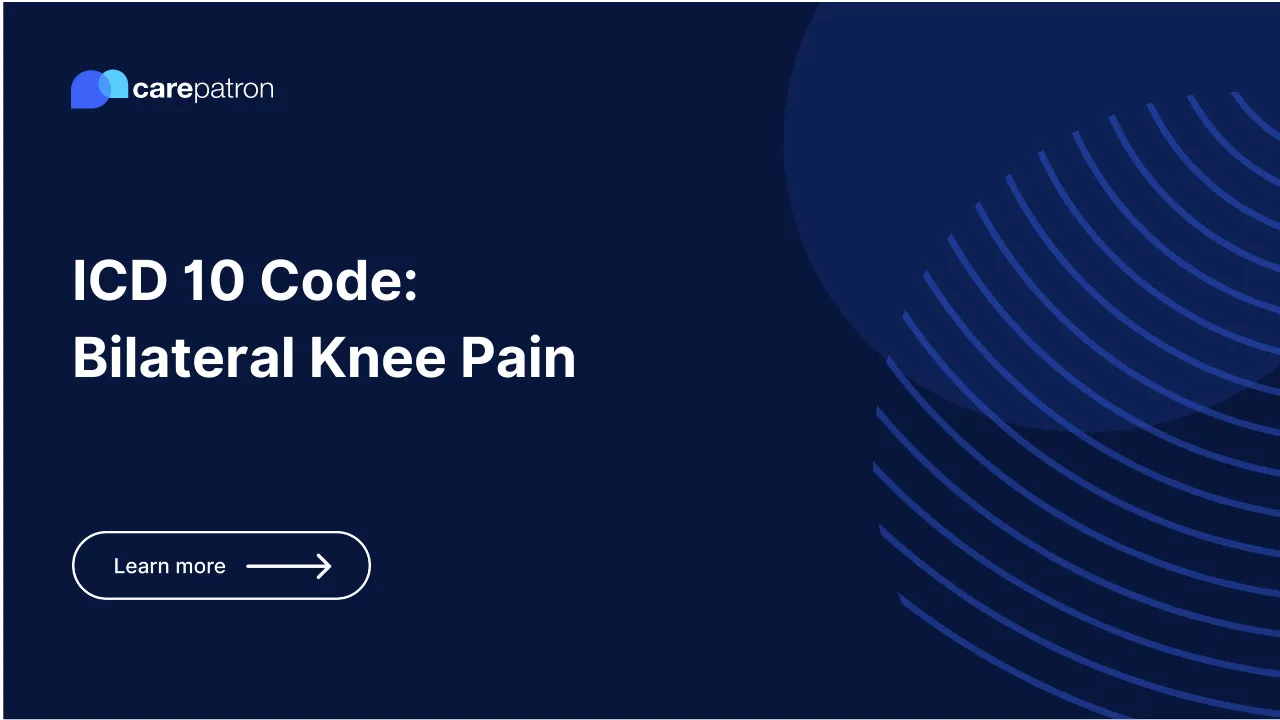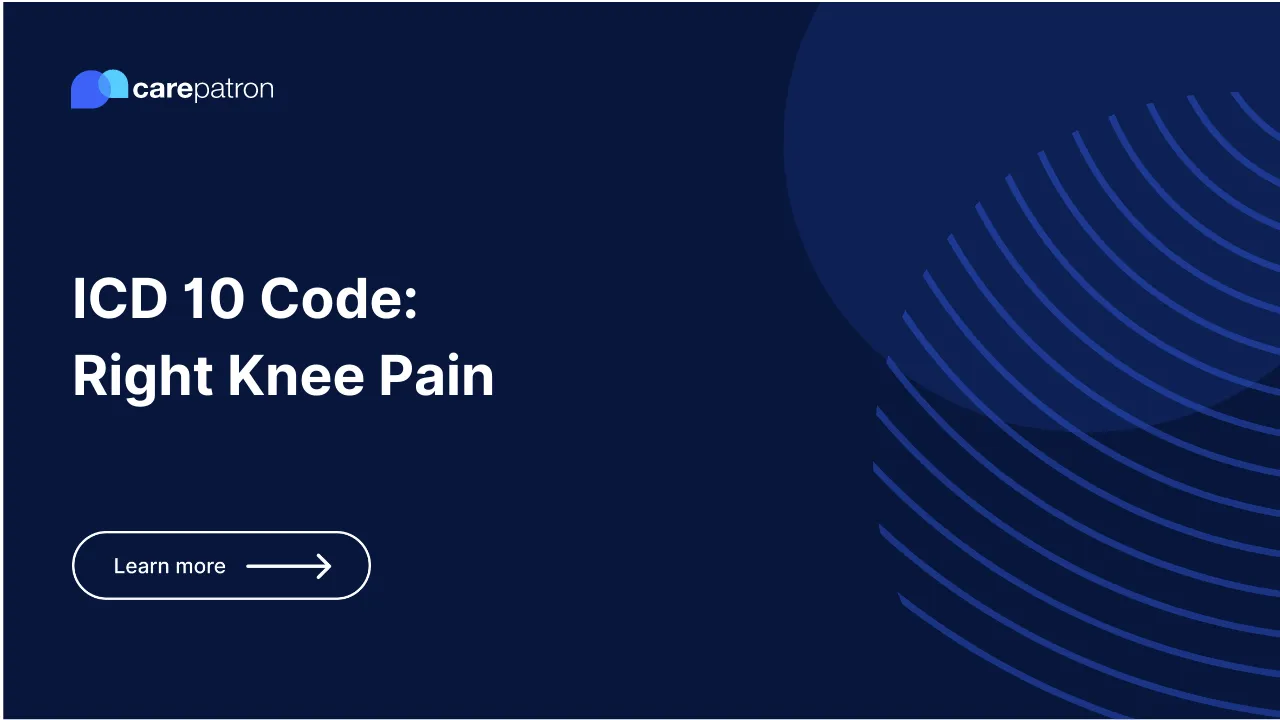Ankylosing Spondylitis ICD-10-CM Codes | 2023
Read this short guide to learn about Ankylosing Spondylitis ICD codes you can use!

What Ankylosing Spondylitis ICD-10 Codes Can I Use?
If you’re looking for Ankylosing Spondylitis ICD-10 codes, there’s much to pick from!
The basic code you’re looking for is M45.9 - Ankylosing spondylitis of unspecified sites in spine. This is meant to be used on patients confirmed to have Ankylosing Spondylitis.
It also comes with an unspecified label, which means the specific location of the problem isn’t known or identified. Once the specific location is identified and confirmed, please use any of the more specific ICD-10 codes:
- M45.1 - Ankylosing spondylitis of occipito-atlanto-axial region
- M45.2 - Ankylosing spondylitis of cervical region
- M45.3 - Ankylosing spondylitis of cervicothoracic region
- M45.4 - Ankylosing spondylitis of thoracic region
- M45.5 - Ankylosing spondylitis of thoracolumbar region
- M45.6 - Ankylosing spondylitis lumbar region
- M45.7 - Ankylosing spondylitis of lumbosacral region
- M45.8 - Ankylosing spondylitis sacral and sacrococcygeal region
If your patient’s Ankylosing Spondylitis has affected multiple regions, you can use M45.0 - Ankylosing spondylitis of multiple sites in spine.
Are these Ankylosing Spondylitis ICD-10 Codes Billable?
Yes. These ICD-10 codes for Ankylosing Spondylitis are valid and billable.
Clinical Information about Ankylosing Spondylitis:
Ankylosing Spondylitis is a type of arthritis characterized by chronic spine inflammation. This condition causes the sacroiliac joints and the vertebrae to become inflamed, which leads to persistent back and hip pain, including stiffness. This makes the person feel pain whether they’re immobile or moving their backs, but they will also have difficulty moving.
Over time, the vertebrae may fuse due to new bone formations, which can further affect the spine, resulting in a stooped posture and even lessening the spine's flexibility.
Besides back pain, hip pain, and stiffness, people who have Ankylosing Spondylitis will likely have the following symptoms:
- Neck pain
- Joint pain
- Abdominal pain
- Weakness and fatigue
- Difficulty breathing
- Loss of appetite
- Weight loss
- Diarrhea
Synonyms Include:
- Ankylosing spondylitis of occipito-atlanto-axial region
- Ankylosing spondylitis of cervical region
- Ankylosing spondylitis of cervicothoracic region
- Ankylosing spondylitis of thoracic region
- Ankylosing spondylitis of thoracolumbar region
- Ankylosing spondylitis lumbar region
- Ankylosing spondylitis of lumbosacral region
- Ankylosing spondylitis sacral and sacrococcygeal region
- Ankylosing spondylitis ICD 10
- ICD 10 code for ankylosing spondylitis
- ICD 10 ankylosing spondylitis
- ICD 10 for ankylosing spondylitis
- Ankylosing spondylitis ICD 10 code

Commonly asked questions
They will conduct blood tests to check for the HLA-B27 gene, which makes people more at risk of having Ankylosing Spondylitis. They will also conduct imaging tests to confirm it and see its location.
If Ankylosing Spondylitis is left unchecked and untreated for too long, patients will be at risk of getting spinal fractures, their spines curving forward, Osteoporosis, chest pain, impacted breathing, nerve scarring, and heart disease.
Conservative treatment involves getting regular exercise to slow down or stop the disease from progressing. It also involves taking nonsteroidal anti-inflammatory drugs and disease-modifying anti-rheumatic drugs. Some might administer corticosteroid injections.
If the disease has progressed and the spine has been severely impacted, surgery might be needed to implant artificial joints and correct any curves.






.webp)
.webp)
.webp)
.webp)
.webp)
.webp)
.webp)
.webp)
.webp)
.webp)
.webp)
.webp)
.webp)
.webp)
.webp)
.webp)
.webp)
%2520(1).webp)
.webp)
.webp)
.webp)
.webp)
.webp)
.webp)
.webp)
.webp)
.webp)
.webp)
.webp)
.webp)
.webp)
.webp)
.webp)
%2520(1).webp)
.webp)
.webp)
.webp)
.webp)
.webp)
.webp)
.webp)
.webp)
.webp)
.webp)
.webp)
.webp)
.webp)
.webp)
.webp)
.webp)
.webp)
.webp)
.webp)
.webp)
.webp)
.webp)
.webp)
.webp)
.webp)
.webp)
.webp)
.webp)
.webp)
.webp)
.webp)
.webp)
.webp)
.webp)

.webp)
.webp)
.webp)
.webp)
.webp)













.webp)
.webp)




.webp)


